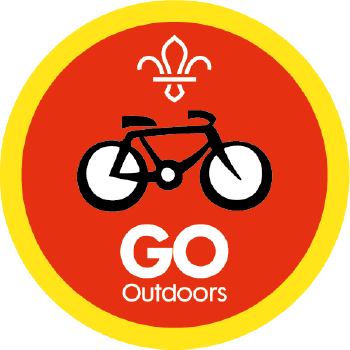Bike update
You’ll need
- Bicycle
- Cleaning fluid
- Brush
- Hose/water bottle
- Grease
- Old toothbrush
- Rag
- Chamois leather
- Polish
- Puncture repair kit
- Tyre levers
- Spanner (if needed for wheel nuts)
- Bike pump
- Spare inner tube
- Chalk/crayon
- Sandpaper
- Tyre pressure gauge
Before you begin
- Ask everyone to bring their bikes and repair kits to the next meeting (if they have them).
- If anyone doesn't have a bike, ask parents/carers to bring in any old ones they have or that other siblings may have.
Alternatively, invite a local bike hire company or a parent/carers who’s confident in bike maintenance to support the session (especially if you’re not confident leading the session yourself).
- Invite parents/carers and Young Leaders to help support the session, as young people will work individually or in pairs.
- This activity works best as a base within a cycling themed evening.
Clean it up
When welcoming everyone with their bikes, make sure to line them up so they each have sufficient space around them. This activity is probably best to do outside where they can handle their bike components in an open space. If some people don’t have a bike, individuals can pair up or form teams of three. Go through these actions one by one:
- Make sure each group or individual with a bike has the necessary cleaning materials next to their bike.
- Explain that you’re going to learn how to maintain your bike, which, firstly, means cleaning it.
- The person leading the session should complete the following steps, making sure everyone can see and copy them on their own bikes. Alternatively, give a copy of the clean bike sheet to each group or individual so they can work through it independently.
- Start cleaning at the top and work your way down, not forgetting under the seat.
- Use a brush to reach places in-between gears and spokes, and to remove dried mud.
- Use bike cleaner for dried-on mud.
- A garden hose or sports water bottle can help to rinse the bike.
- Don’t worry about rinsing brakes or gears. These need a little grease to keep them moving.
- Use an old toothbrush to apply degreaser to intricate parts such as gear cassettes, jockey wheels, chain rings and the chain.
- After washing, dry the bike off carefully with a soft, clean rag.
- Put some lubricant on the chain after you’ve finished cleaning the bike to keep the chain running smoothly.
Reflection
Why is it important to clean your bike? Do you think it would be different if you had to repair a puncture on a long ride?
Safety
All activities must be safely managed. You must complete a thorough risk assessment and take appropriate steps to reduce risk. Use the safety checklist to help you plan and risk assess your activity. Always get approval for the activity, and have suitable supervision and an InTouch process.
This activity can be made harder by expecting more independence from the participants as they perform the tasks.
Make it accessible
All Scout activities should be inclusive and accessible.
Perform other bike maintenance tasks. For example, clean and oil a bike, pump up the tyres to the right pressure, refit a cycle chain, test and fix brakes, or adjust the saddle and handlebars.
These skills can help a young person become a more confident and independent cyclist.
